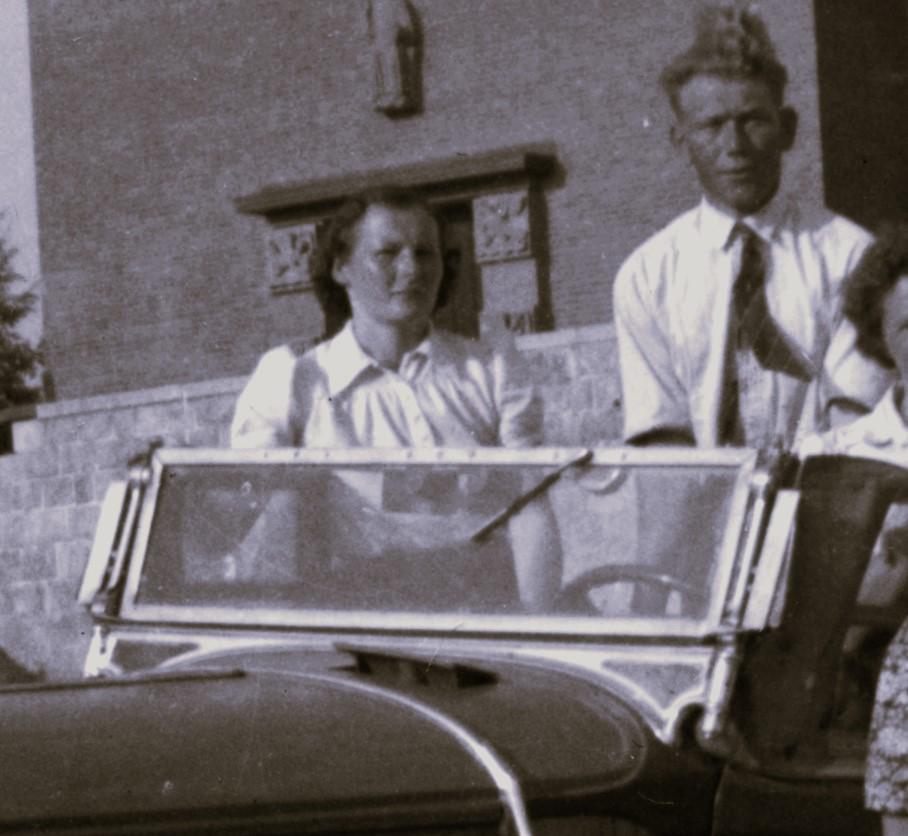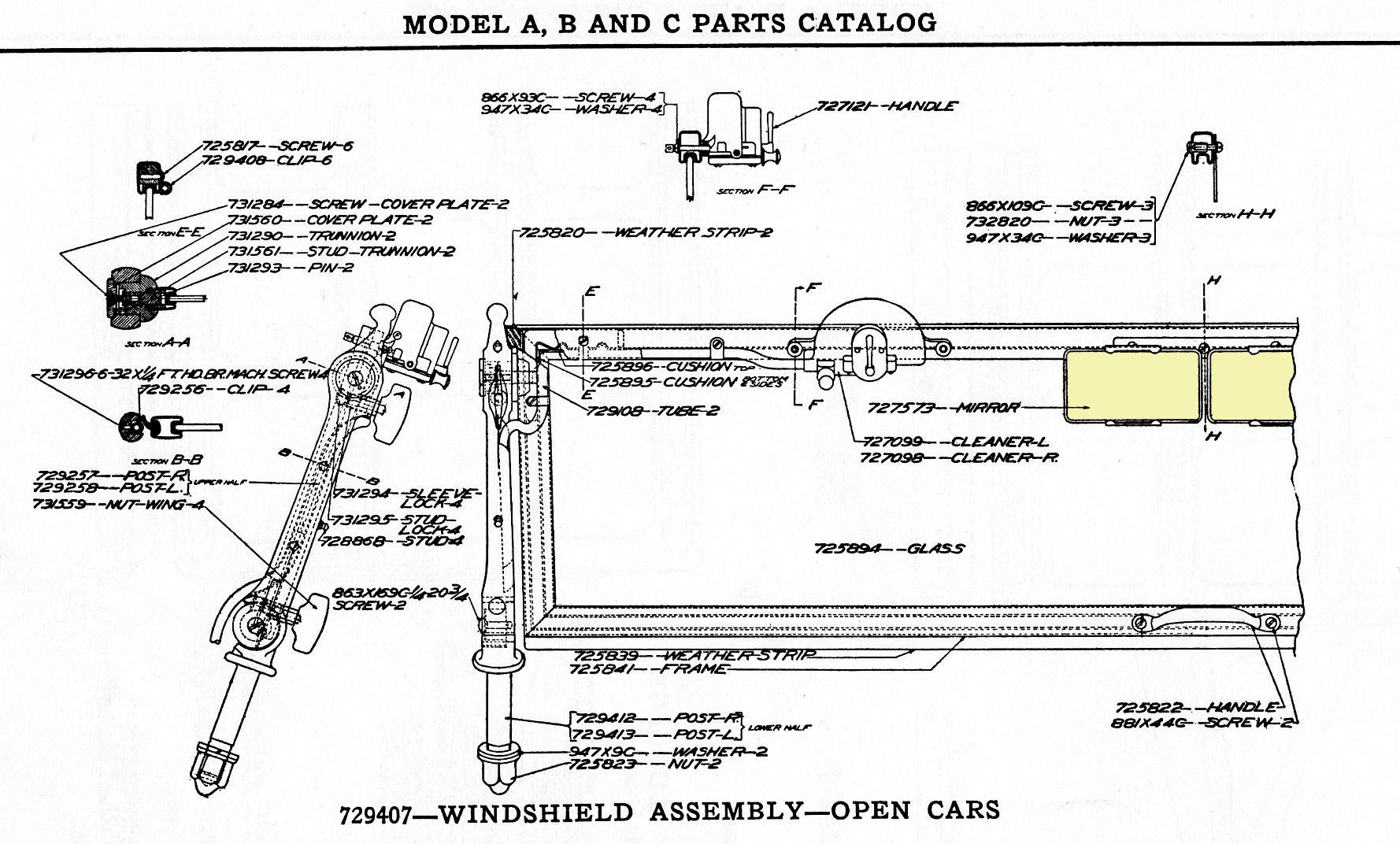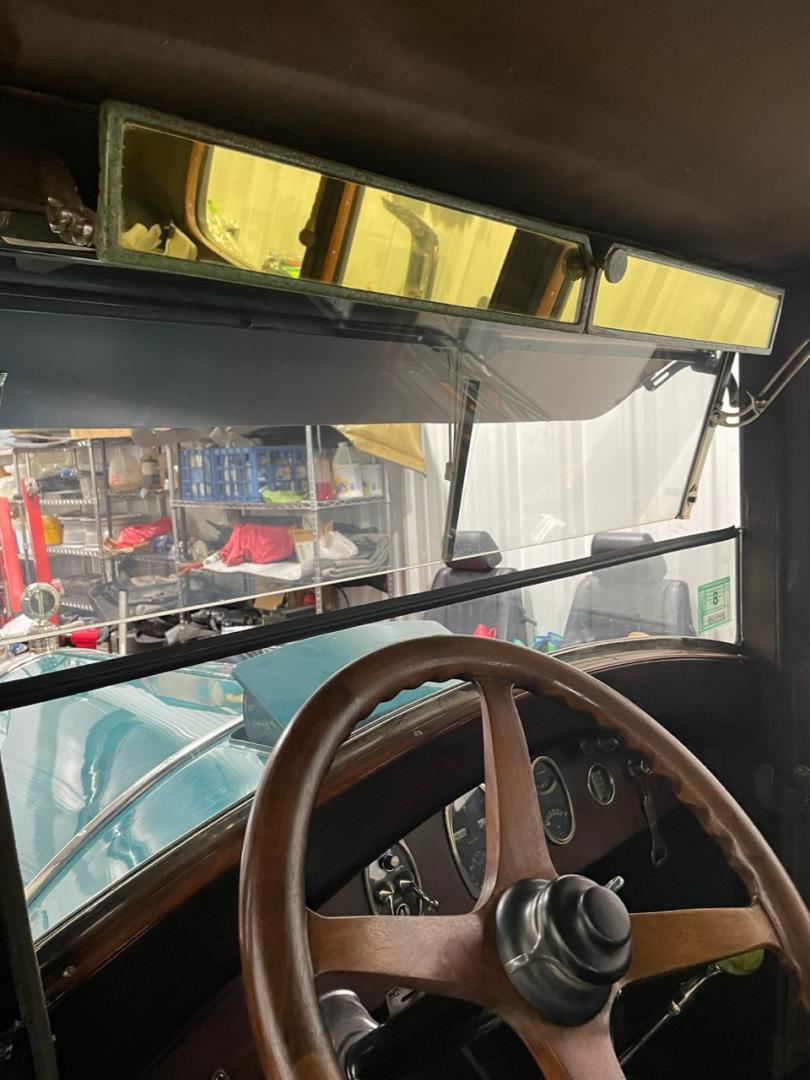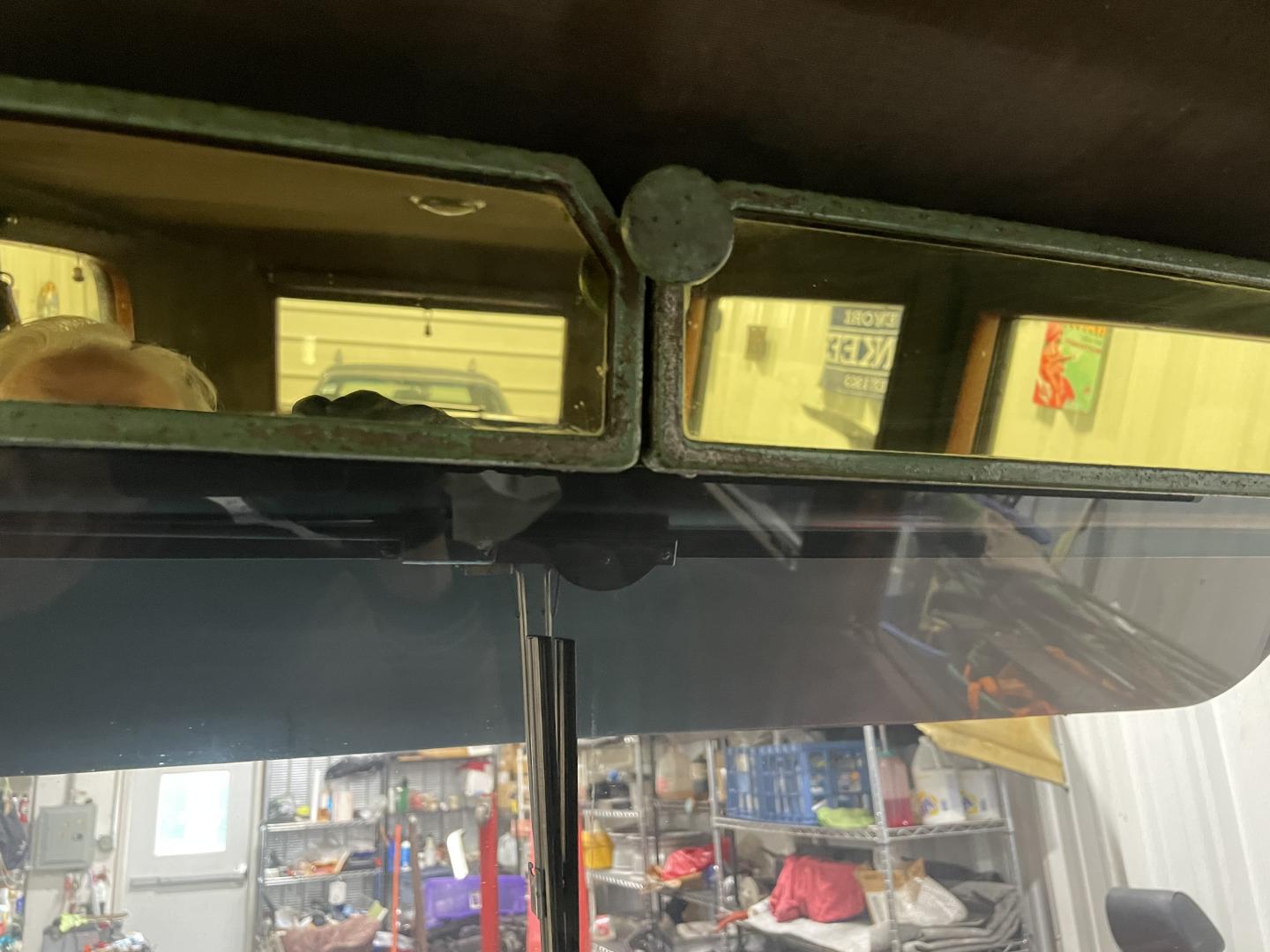- Home
- About Us
- Join/Renew
- Member Benefits
- Member Pages
- Log In
- Help
- Museum Store
Tagged: Rear view mirrors
Why do many Pierces have dual side by side aftermarket interior rear view mirrors? I wonder if it is because the original single mirror is impossible to find or because the view to the rear is so blind that dual mirrors were added for better visibility. Or both?
I have never located an original single mirror in 30 years of looking, so I assumed the many dual mirrors were because others couldn’t find one either. I just tried to mount a single aftermarket mirror and discovered that what I got interferes with the RH sun visor because it is both a bit too wide and the mount is located right of centerline. It looks like it requires a mirror less than 5 1/2″ wide to clear the visor. That is pretty narrow and perhaps too limited in view? I have found an aftermarket oval that is supposed to have a convex glass so hopefully will fill the view through the rear window.
I have mounted peep mirrors to the doors, the RH has a convex wide angle reflector.
My 1935 Model 845 seven passenger sedan (which I bought from the orignal owner in 1950) has the dual rear view mirrors.
My 1931 phaeton has the dual mirrors. I’m sure their use could be endlessly debated. One explanation I’ve heard is that it gives the wife/girlfriend/sister/daughter in the right front seat a mirror to use for beauty purposes (before mirrors were mounted on the back of sun visors). Another explanation is that it can be slanted to see what’s on the right side of the car, though that makes little sense on the two lane roads primarily used then.
Interesting.
Paul, your car’s mirrors are interesting, the pictures I took show that besides the dual interior mirrors it has sidemount mirrors (which I assume are original) and a mirror with a long extension mounted to the door hinge. This seems like a clear case of so not being satisfied with rear visibility!
Paul’s sidemount mirrors are offset to the outside of the covers unlike most that are mounted centerline to the tire, clearly an attempt to improve the view from a sidemount mirror. However, now that I can sit in mine with fenders on and a tire sitting in the well it looks like the windshield post might block the view of the sidemount mirror, and maybe explains the extra door hinge mirror.
My first experience driving a ’30’s car was ferrying a friends ailing and partially stripped Packard V-12 30 miles on four lanes without any mirrors. I discovered I couldn’t see behind to change lanes even sticking my head out the window because of the body being wider at the back than the front. Fortunately I had guys caravaning in front and back that could block for me when I had to change lanes.
I have sidemount mirrors on my Packard which are not ideal but indispensable. I know some find them useless but mine are mission adequate with a lot of head bobbing. A convex on the RH would be a help.
I’ve learned in driving my phaeton just to stay in the right lane.
Model 43 phaeton, which the previous owner equipped with an overdrive in 1960 (Franklin Overdrive, no association with car company, I have original instructions), can do 60 to 70 no problem, so I do my best not to look right.
On this (bad) Photo of my car taken in 1948 you can see the dual interior view mirrors inside the window frame. They were missing in my start up project. At Hershey I took some photos and made nescessary sketches and measurements of similar cars. Back home I constructed the brackets for the dual mirros. I must admit that I bought 2 ea. mirrors at a Ford model A shop at Hershey. They fit perfectly.
I have tuned them in with a very large angle (not in a stright line) which make the rear view much broader and better control (like a wide screen…) .
.
This drawing is from the 1930 spare parts catalog (model A, B and C). As I interprete the catalog the dual mirrors were only used in the open cars.
Interesting, besides actually having a parts catalog with drawings! I am guessing that open cars had them because with the top down it is actually possible to see something to the left and right. I just got my next attempt at a rear view mirror, just wide enough to frame the small rear window. I wanted a wide angle convex but since my car is a club sedan with blind rear quarters it wouldn’t have done any good anyway.
I sometimes inevitably end up having to navigate through frenetic multi lane freeways (I-80/I-5 Sacramento) and staying in the RH lane isn’t a comfortable choice with all the merging and exiting going on. I have a 3.58 rear end in the Packard and 65 mph isn’t a problem in traffic. I am keeping the Pierces 4.23 rear end and will probably stay below 60, it may not be going that direction.
I just went out and looked at my ’29 143 EDL and it has dual mirrors.
As far as I can tell, it always has had those mirrors.
Car is extremely original and there are no other holes in the original panel above the mirrors.
Gents,
My 1925, Series 80, 7-passenger, DeLuxe Sedan (named Chauncey) has a Full-Width, Two part interior rear view mirror.
It adjusts by moving the center out to provide “some” Side-View experience. However I always do a Head Check before I change lanes.
It is not as though I weave through traffic, as 45 – 50-mph is the maximum speed I can get out of Chauncey.
I will post a photo of it soon.
Peter



By twisting the center knob the mirror moves forward from the center and causes the mirror to angle out so that the driver has “some” view of the left and right outsides of the car.
It is not very efficient and “head-checks” are required.
For that reason I installed exterior side view mirrors (photos following).
Here are photos of the side view mirrors that I installed.
It is difficult to Pound Out the pins for the top hinges, hinges that had been in place since 1925.



